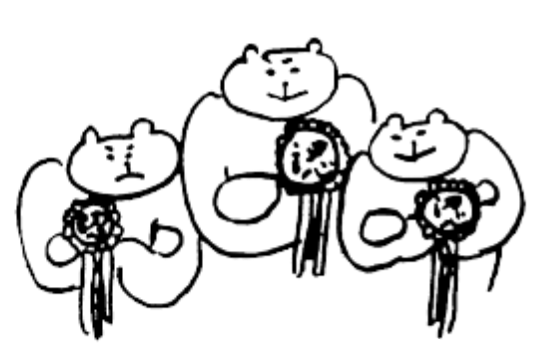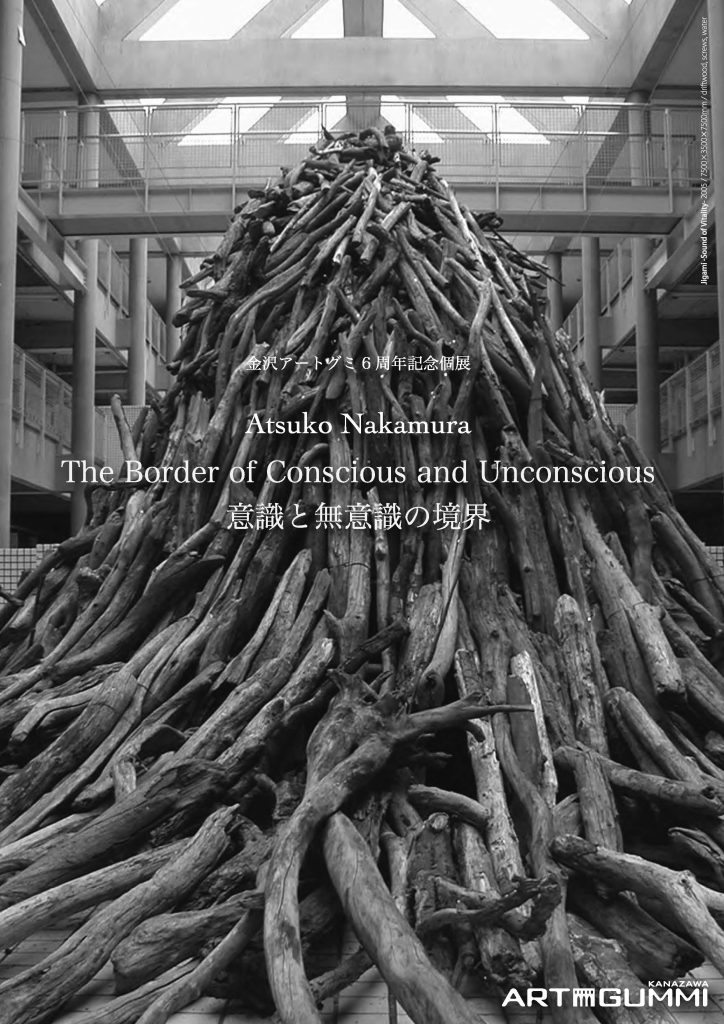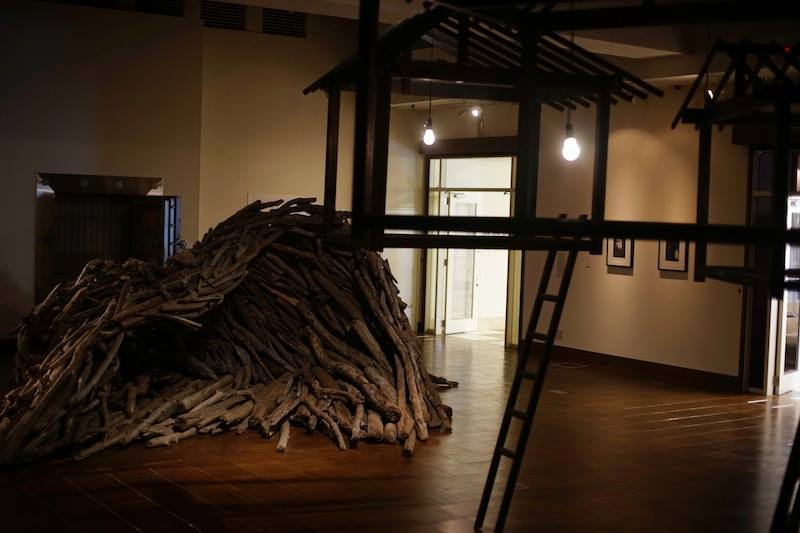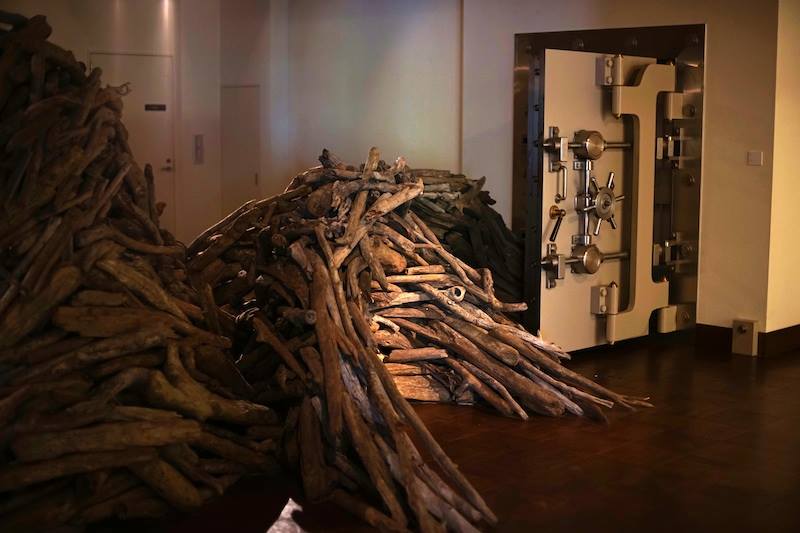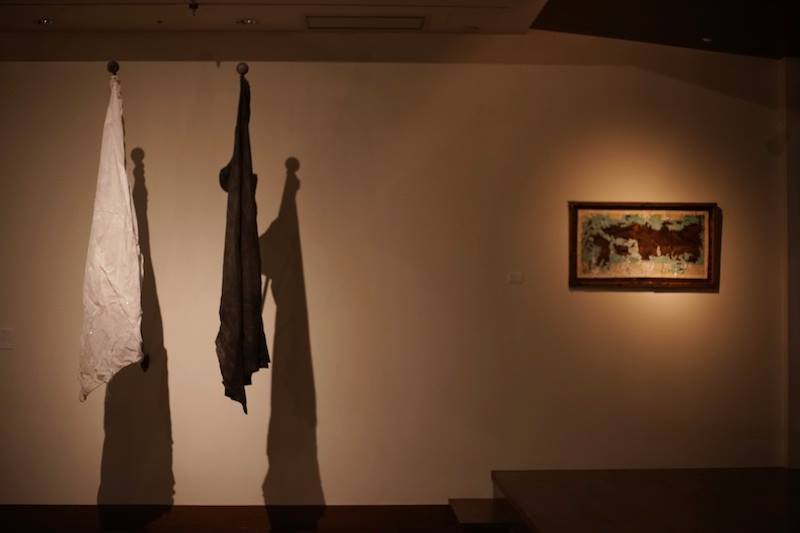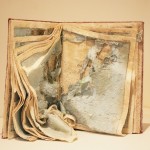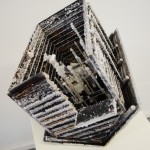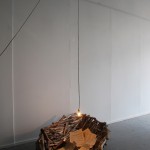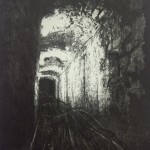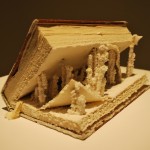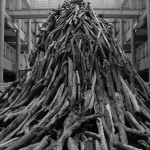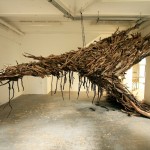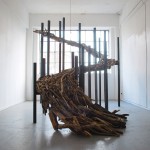この度、金沢アートグミ6周年記念として石川県金沢市出身の現代美術作家
Atsuko Nakamura の個展を開催いたします。
〈概要〉
展覧会名|金沢アートグミ6周年記念個展
Atsuko Nakamura 個展 意識と無意識の境界
主 催|NPO法人 金沢アートグミ
協 力|株式会社 北國銀行
会 期|2015 年 4月 26日(日)‒ 2015 年 7月 20日(月)
※ 4 月25日18 : 00より下記イベントあり
開館時間|10 : 00 ‒ 18 : 00
休 館 日|水曜日(祝日の場合は翌日)
入 場 料|無料
会 場|金沢アートグミ
〒920 – 0907 石川県金沢市青草町88番地 北国銀行武蔵ヶ辻支店3 階
Tel 076 – 225 – 7780
Web www.artgummi.com
〈オープニングイベント〉
2015年4月25日(土)
18:00- オープニングパーティー ( ¥500- 軽食付)
19:00- アーティストトーク 土屋 公雄 × Atsuko Nakamura
Atsuko Nakamura がアーティストを志すきっかけとなった恩師である土屋公雄氏をお招きし、
対談形式のアーティストトークを行います。(予約不要・先着 50 名)
(つちや・きみお…彫刻家・愛知県立芸術大学教授・武蔵野美術大学建築学科客員教授)
2005 年武蔵野美術大学建築学科卒業、2011 年ロンドン大学スレード美術学校大学院彫刻課程修了。主な展覧会は、2014 年「Monologue Dialogue 3」バンコク現代美術館(バンコク/タイ)、2014 年「Academy Now I」ボローニャアートフェア(ボローニャ/イタリア)、2013 年「Delve」Leyden Gallery(ロンドン/イギリス)、2011 年「The Future Can Wait 2011」Charlie Smith London and Saatchi Gallery(ロンドン/イギリス)、2011 年Atsuko Nakamura個展「The Pulsating Earth」La Caja Blanca Gallery (パルマ・デ・マヨルカ/スペイン)など。
〈参考画像〉
- 1
- 2
- 3
- 4
- 5
- 6
- 7
- 8
1 Border of Consciousness and Unconsciousness Installation / 300×450×200mm /Map of England, Salt / 2013
2 Sound of Memory Installation / 300×150×300mm / Wood, Wire, Strings, Salt / 2013
3 I fly: here over the water – there under the trees… Installation / 1900×1000×510mm /Driftwood, Screws, Salt, Light, The music score ofViolin Concerto No.1, Op. 35 by Karol Szymanowski / 2013
4 a tale of genius loci #1 Ink on paper / 210×297mm (Image Size) / Photoetching, Aquatint, Drypoint / 2013
5 Allegory of the Cave 150×200×150mm / Slat, Wire, Strings, the Book of ‘The Republic’ by Plato / 2011
6 Jigami Sound of Vitality Installation / Driftwood, Water / 7500×3500×7500mm / 2005
7 Fragment Installation / Driftwood, Screws / 4000×1500×1500mm / 2010
8 River installation / Driftwood, Screws, Timbers, Light / 3100×4400×2900mm / 2013
〈プレスリリース〉
Atusko Nakamuraの作品と本展について
(文/藤岡勇人)
Atusko Nakamuraは、これまで「都市と自然」をテーマに現代社会が抱える様々な矛盾や葛藤を翻訳し、身体的な体験を促す作品表現を通して社会への提言を行ってきました。 異なる国や地域で制作発表してきたNakamuraは滞在先で必ずフィールドワークを行い、その「場所」の風土や住人との対話を繰り返し、その経験から生まれる疑問やインスピレーションを作品へと昇華させてきました。天災と人災が続く不安定な時代に整合性が取れず、大きなストレスを抱えた人間、自然、都市、地方、伝統文化の警鐘から生まれたインスタレーション作品は世界各国で称賛を受けています。
Nakamuraのサイトスペシフィックな作品は、見る角度や時間帯によって意味が変わる流動的な要素を併せ持つため、常に新鮮な感覚を喚起させます。また、表現メディアは流木や塩などの自然素材を用いた彫刻やインスタレーション、映像、音、版画、ドローイングなど多岐にわたり、それらは作品のコンセプトに応じて慎重に選ばれます。Nakamuraは作品毎に使用する素材の意味を咀嚼し、その特性を生かしながら、辛辣な社会的問いかけを行っています。比喩的で時にユーモラスな社会風刺を交えたNakamuraの作品は、誰しもの心に強く訴えかけてきます。
異なる「場所」で横断的な「メディア」や「素材」を用いて制作される作品は常に刷新されつつも、根底には本来人間が共有しているイメージや深層心理への言及があり、その言語は作品の存在感として現れ、見る人の感性に語りかけます。その魅力は決して90年代初頭にオリエンタリズムで括られた欧米の日本神話ではなく、人類の根源的なテーマを含蓄した革新的な現代表現としてヨーロッパで高い評価を受けました。
このような作家としてのスタンスは、Nakamuraが大学時代に学んだ建築的な視点から出発し、土屋公雄氏やジョン•ヒリアード(John Hilliard)氏の影響を受けながら、数多くのフィールドワークや実験を通してNakamuraが見出した方法論でもあります。
本展はNakamuraの日本初個展であり、また初めて故郷の石川県を舞台に制作発表する機会となります。展示会場であるアートグミは2009年に北國銀行武蔵ヶ辻支店の3階にオープンしたギャラリーで、建物は、日本を代表する建築家、村野藤吾によって1932年に建築されました。歴史的な重厚感のある空間を生かし、その場所のルーツや人々に言及するサイトスペシフィックなインスタレーションは展覧会の見どころです。また、Nakamuraが一義的な主眼を置く「都市と自然」の問題は、日本におけるポスト3.11の文脈で語られます。日々風化していく原発問題への危機感を呼び覚ますようなインパクトのある彫刻作品や音の作品も展示されます。
Nakamuraは「都市と自然」を考える上で、ユングの「人は自然の一部でありながら、人間の意識は自然に逆らう性質を持っている」という言葉、また「都市は人間の意識が作り出した人工物である」という説明を起点としています。このことからNakamuraは人工=意識、自然=無意識という図式を見出しています。Nakamuraの作品は無意識の領域を視覚化することで、無意識の側から意識の領域にまつわる様々な問題をあらわにして提示しています。本展「意識と無意識の境界」は、Nakamuraのマルチメディアな現代アート表現を通して、見る人の感性に語りかけ、様々な問いを発する展覧会です。
藤岡勇人 Fujioka Hayato
東京藝術大学美術学部助教。ロンドン芸術大学セントラル•セント•マーチンズ校卒業、BA Criticism, Communication and Curation学科修了。展覧会や文化事業の企画•運営、美術評論、ドキュメンタリーの映像制作に従事している。
We are pleased to have the first solo exhibition by Atsuko Nakamura in Japan and Kanazawa, her hometown.
Atsuko Nakamura completed MFA at the Slade School of Fine Art, UK, 2011. Her degree show piece ‘Engrave’ gathered considerable attention from art galleries, curators and collectors and it triggered to exhibit in museums and galleries all over the world. Her work has been focused on the relationship between man and nature through history, myths, and psychology. She often use natural materials such as driftwood or salt, and creates extraordinary and site-specific installations, which ‘intervene’ into the space rather than ‘to be placed’ and contextually tied with the site, appeal to the primitive part or intuition of viewers and question how to see the world surrounded us.
In this exhibition, she is going to show new works underlying her resent theme, “ The Border of Conscious and Unconscious” which came from her practice and inspired by the unique space of Kanazawa ARTGUMMI and myths and history of Ishikawa.
Atsuko Nakamura (b.1982) completed BA architectural course at Musashino Art University, Japan 2005, and acquired MFA at the Slade School of Fine Art, UK 2011. She has exhibited internationally including solo exhibition ‘The Pulsating Earth’ La Caja Blanca Gallery 2011 (Palma de Majorca/Spain) and group exhibitions, ‘Monologue Dialogue 3’ at BACC 2014 (Bangkok/Thailand), ‘Academy Now I’ at Bologna Art Fair 2014 (Bologna/Italy), ‘Delve’ Leyden Gallery 2014 (London/UK), ‘The Future Can Wait’ Charlie Smith London and Saatchi Gallery 2011 (London/UK).
Private View 2015.4.25 [Sat]
Exhibition 2015.4.26 [Sun] ‒ 7.20 [Mon]
10:00-18:00 Wednesdays closed (except for National Holidays on Wednesday, in which case the gallery is open on the holiday and closed the following Thursday instead)
Entrance Free organized by NPO Kanazawa ARTGUMMI
NPO Kanazawa ARTGUMMI
Hokkoku Bank Musashigatuji Branch 3F, 88 Aokusa, Kanazawa, Ishikawa,
920-0907, Japan
tel 076-225-7780
web www.artgummi.com
【Event】
Artist Talk
Kimio Tsuchiya × Atsuko Nakamura
4.25[Sat] 19:00-20:00
Entrance Free (only for the first 50 applicants)
¥500 for the party banquet started 18:00
Kimio Tsuchiya is sculptor, professor at Aichi Prefectural University of Fine
Arts and Music, and affiliate professor at Musashino Art University.
[Organization] NPO Kanazawa ARTGUMMI
[Cooporation] Hokkoku bank
The work of Atsuko Nakamura and this Exhibition
(Written by Hayato Fujioka)
Atsuko Nakamura approaches the theme of “the city and nature” by responding to the contradictions and conflicts to be found in today’s society, as well as by impelling viewers to perceive the physicality of her work, in which she asks fundamental questions of society. Her productions in different countries and locations include a number of fieldworks – dialogues with people and the places in question – which embody thoughts and inspirations derived from her researches. Highly-acclaimed installations that she has created in various countries express the alarming warnings that she has detected – from individual people, nature, cities, countries and traditional cultures – of a loss of social equilibrium that is resulting both from natural and from man-made disasters.
Because the fluid nature of Nakamura’s site-specific works can provoke different reactions, depending upon when and where they are viewed, they never cease to arouse new sensations. The media are diverse, ranging from sculpture using natural materials – such as driftwood and salt – to installations, video, sound, printmaking and drawing. These are chosen with meticulous care, in order to express her concepts effectively. Nakamura makes use of the particular features of her chosen materials, so that they act as means of conveying her social criticism; yet her work is often hermeneutic, using metaphors and humorous satires that viewers find intriguing.
Nakamura’s works, created in different locations with differing materials, are constantly being renovated. The attraction of her work is not to be found in the interpretation of Japanese mythology that, in the West, was referred to as Orientalism during the early 1990s. Rather, it appeals to inherently human instincts and this encourages sympathetic understanding of them. This may be one reason why they have been highly acclaimed in Europe.
Nakamura’s standpoint is founded upon her methodology, influenced by her architectural studies at university, by the work of Kimio Tsuchiya and John Hilliard, and by the exhaustive amount of fieldwork and experimentation that she has conducted.
This exhibition is Nakamura’s first solo display in Japan and the first presentation of her work in Ishikawa Prefecture, where she was born and raised. Art Gummi, where she exhibits, is a gallery space opened on the third floor of Kitaguni Bank’s Musashigatsuji Branch, a building dating from 1932 and designed by Togo Murano, a prominent Japanese architect. The exhibition will be designed to resonate with this historic venue, where her site-specific installation, referring to the people and the origins of the place, will be one of the highlights. Also, one of Nakamura’s most important themes, “the city and nature”, will be considered in the context of post-March 11 Japan. The exhibition includes sound works and sculptures that are significant comments upon the issues relating to nuclear power generation that are currently preoccupying Japan.
Nakamura’s thoughts on “the city and nature” were prompted by Jung’s observations: “While mankind is a part of Nature, human consciousness often acts against Nature,” and “A city is the product of human consciousness,” from which Nakamura established the following formulae: Artifice = Consciousness, Nature = Unconsciousness. Her work identifies a wide range of problems in the realm of consciousness by means of visualizing the unconsciousness with which the conscious realm is contrasted. This exhibition, entitled “The Border between Conscious and Unconscious” andfeaturing Nakamura’s multi-medium artistic approach, will raise a number of questions in viewers’ minds.
Hayato Fujioka
A graduate in Criticism, Communication and Curation of London’s University of the Arts’ Central Saint Martins College, Hayato is working on a wide range of cultural projects and exhibitions, as well as writing about art and directing a documentary film. He is currently employed by Tokyo University of the Arts as an associate lecturer.

